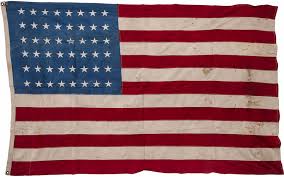FULLENWIDER, Wallace "Terry"
WALLACE "TERRY" FULLENWIDER 

To bring in March (1917), Wallace "Terry" Fullenwider was born to Henry Newton and Rosalie Tarkington Durham Fullenwider. He joined older brother, Bob. Terry graduated from Waveland High School then off to WWII, where he spent 25 months in the South Pacific area including the South Pacific, Guadacanal and Guam. He came out of the USMC (3rd Marines) in mid 1945 as a Tech Sgt.
While he spent 25 years in the New York area working for Austin Company, General Contractors, where he was superintendent, he returned home after retirement and married Berniece Carlisle, widow of WWII veteran, Eston Myers. They were happy as larks, and I used to love to be around them as they spread their joy. Always laughing, they also enjoyed each other, the family and helping in the community. Terry treated her children as his own but also had a son, Daniel Newton (a long-time Fullenwider family name) by a first marriage. Danny is a retired Marine, living in Hawaii.
Terry was involved in their church, VFW, American Legion and the Moose Lodge. A funny fella, I miss that guy - kbz
The opening scene in the movie, Saving Private Ryan, is about what Terry would have gone through in the service in Guam, definitely something that would live with you forever.
He passed away on the 12th day of December in 2002, at the Danville, Illinois VA hospital and is buried where many of the Fullenwider's have their final resting place, Freedom Cemetery, north about four miles of the 'ol town of Waveland. - kbz
Note: Thanks to Terry's son Dan for sending not only the pictures but this note about his dad, as well.
Dave, These are the only three I have of him in uniform. The first two are of him on Onslow Beach in Camp LeJeune. The last of him was taken of him taking some R&R in New Caledonia after the battle of Guadalcanal. My dad was a Marine Tech Sergeant serving with the 14th Defense Battalion, 3rd Marine Division. After fighting in the battle of Guadalcanal he set up “Molly Radar” on the adjacent island of Tulagi. He “souped-up” Molly Radar to the point where he could interrogate and locate incoming enemy aircraft through IFF target acquisition out to several hundred miles. After “The Canal” he was part of the invasion on July 21, 1944 of Asan Beach in Guam. This was the worst combat he saw. The Marines took heavy casualties (1,777 killed, 5,798 wounded, 23 missing – most of these occurred in just one day). Many LVTs got hung up on the reef and 20 were destroyed. My dad’s LVT got hung up and for hours was the target of heavy machinegun fire and mortars. When the tide finally abated he waded ashore, chest deep, through 300 yards of dead bodies and sharks and jumped into a crater made by naval gun fire. His position in the crater was swept by mortars and heavy machine gun cross-fire that originated from the bluff near where COMNAVMAR is now behind the beach. The mortars would blow up the dead bodies on the beach and at times my dad was covered in the body parts that rained down on him. It took hours for the Marines to get a tank off the ship, onto the beach, and up to the bluff where it took out the gun implacements with a flame thrower. My dad recalls that day as best being illustrated by the invasion scene depicted in movie “Saving Private Ryan.” NOTE: I’ve visited this site many times during my travels throughout the Pacific. There is a “War in the Pacific Museum” at this site and the major thoroughfare on Guam is “Marine Corps Drive.” I dove (SCUBA) the “bomb pits” (the area where his LVT got hung up). He was a wide open target and as I see it could only have survived through devine intervention. After Guam he participated in Operation Detachment in the Battle of Iwo Jima which took place February-March 1945. I visited Iwo in July 1984. Iwo is 500 miles south of Tokyo. It is only about 5 miles long and Mount Surbachi is only about 500 feet high yet because of the caves and substantial enemy entrenchments it took the Marines over a month to take it. During this battle 6,821 Marines were killed, 19,200 were injured. Also, after the Battle of Iwo Jima my dad hitched a ride on the USS Indianapolis in order to get some RADAR parts over to Saipan and Tinian. The Indianapolis was sunk just a week later resulting in the largest single ship combat loss in US Naval history. After the war my dad’s first landfall in the mainland US was at Seattle, Washington where the citizens held a parade for the returning Marines. My dad said all he could do during the parade was cry while marching– not believing what he lived through. During the parade a man ran up to him and said “I want to cry with you!” Although known as one of the most loving, caring and gentlest men that people who knew him will ever know; his PTSD was severe and lasted for years as my mother and I vividly remember. Dan
